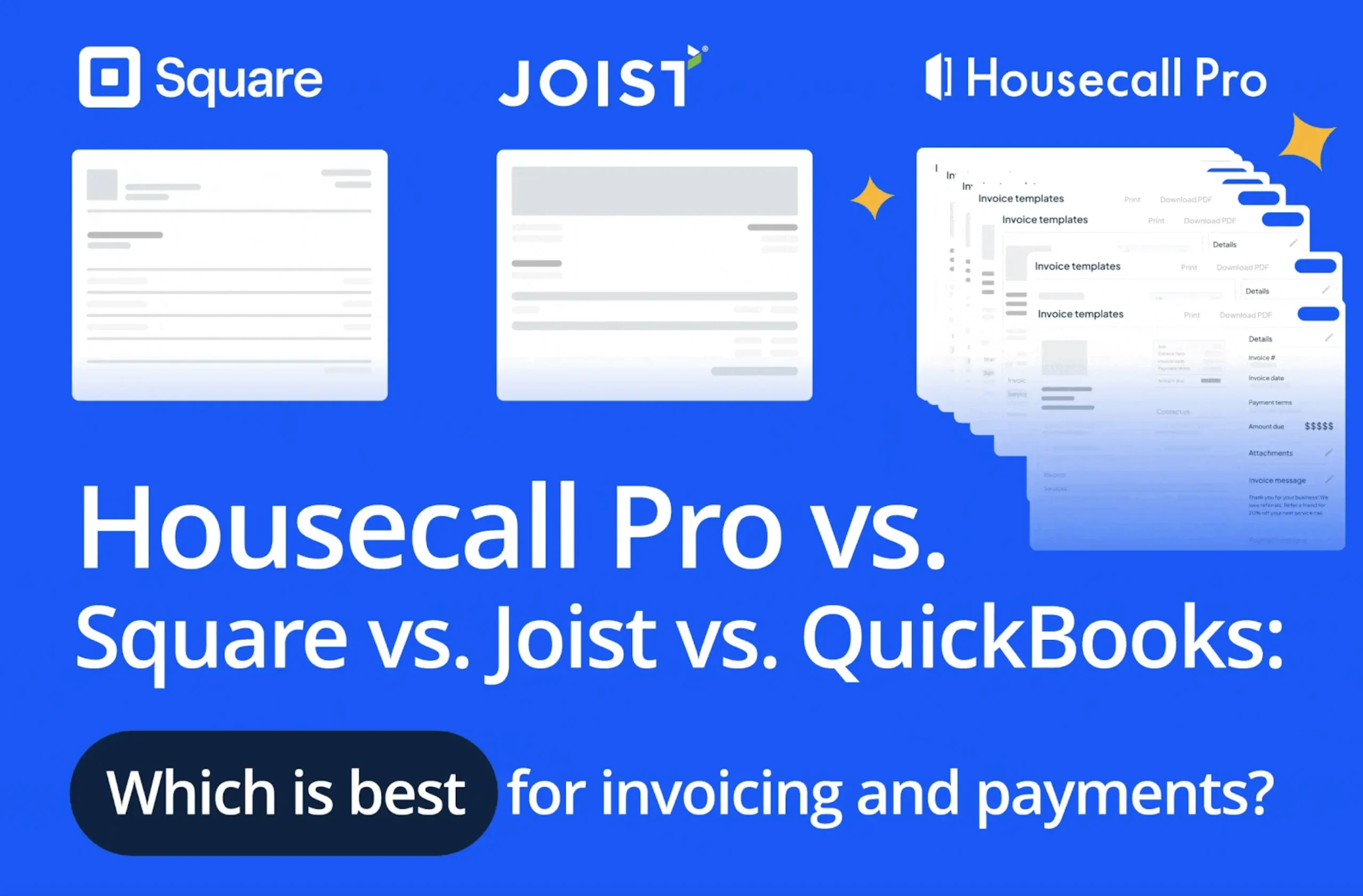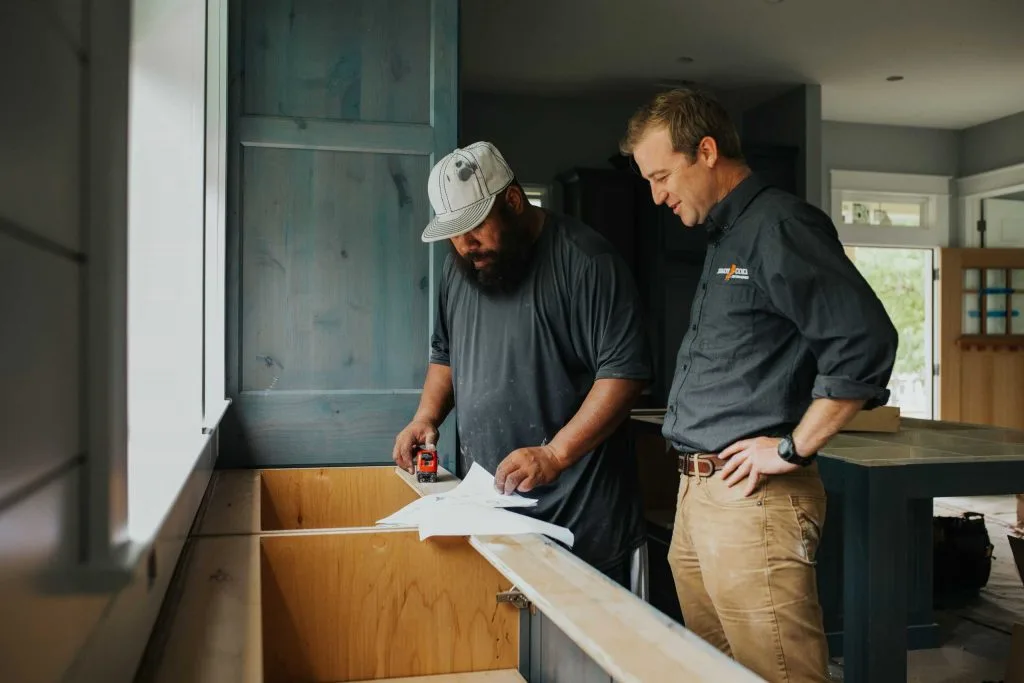
Electrical contractors must be able to create estimates to bid on projects to keep the business flowing. The problem is knowing how to calculate an estimate safely to cover labor, parts, equipment, subcontracting (if applicable), overhead, and profit. A second problem is placing the correct bid to win the job over other bidding electricians. So, how do you bid on electrical jobs? Keep reading to find out.
Bid Preparation Tips for Your Electrical Estimate
Bidding on any electrical job requires experience with similar jobs to calculate your electrical estimate and bid appropriately. There are several factors to include in your estimate, and you need to account for delays such as mishandled information, weather, and more. Here’s how to bid on an electrical job in 10 steps.
How to Bid an Electrical Job: 10 Steps to Win More Bids
Step 1: Choose the Right Project
The first step to bidding on an electrical job is to choose jobs you have experience with. This first step gives you more power to bid accurately, mainly because you know of potential challenges and task variations involved in the job that you may encounter. Less experienced tasks can get you into trouble by costing you more than you would get on the job.
Step 2: Review Docs & Job Specs
Using your extensive electrical experience for the job, review all blueprints, drawings, and notes to prepare your inventory list. You should also review the job’s specifications to determine project costs accurately.
You may find electrical drawings used to add more detail to a blueprint. Notes often include extended information and specifications about the job.
Step 3: Calculate Material Quantity (Quantity Takeoff)
The next step in the bidding process on electrical jobs is estimating material quantity (and costs), also known as quantity takeoff. You must create a list of all materials and items needed to complete the job and estimate the costs effectively. However, you may want to separate the lists into individual tasks to organize them better and calculate costs per task, especially labor.
What to Include in Quantity Takeoff
This step is where you’ll include all items and supplies. Items include electrical boxes, circuit breakers, wiring, lighting fixtures, etc. Electrical equipment includes electrical tape, wood boards (placed behind wall boxes), wire nuts, and caulk (sealing electrical boxes/wire holes, etc.).
Each item on your material takeoff list should clearly explain its price, such as the unit price (often lower for bulk purchases), shipping (if applicable), tax (if applicable), etc. Items should also include their use. To simplify the list, use labels, codes, etc., from the blueprints, breakout drawings, and other documents, such as “Light B2,” “Panel D34,” or “Conduit F4.”
When you detail your bid amount, you want your customer to understand the charges. However, you must also know your material costs and what they refer to so you can bid effectively. Our electrical estimate software can simplify and streamline the estimating process.
Step 4: Calculate Labor Costs
Once you have calculated your supplies and associated them with each task or item (Lighting B2, Networking Station NTS37, etc.), you must add labor costs. Review the tasks and related work to calculate labor unit and burdened cost of labor. For example, at $90/hour, you would have Lighting B2 ($180 for 2 hours) and Panel D34 ($135 for 1.5 hours), etc.
Three Types of Labor to Calculate in Your Estimate
- Labor unit: A labor unit incorporates two types of labor per hour—60-70% for installation time and 30-40% for material handling and cleanup time.
- Burdened labor costs: Burdened labor costs are the expenses for each labor unit. These are the non-wage hourly costs for all labored employees, except supervision positions (more on this later).
- Supervision costs: The costs accumulated for supervision on a particular job get calculated differently than wage costs. You’ll take the salary instead of the labor unit and add that to burdened labor costs for a specific period.
Note: Supervision labor should be calculated separately, as it is usually based on salary, multiple jobs, and other factors. Every job is unique and requires variables in supervision. Most electrical contracting businesses prefer to estimate supervision costs separately, making estimates more efficient.
What is a Fully loaded rate?
The fully loaded rate is the total labor costs for a specific period. It includes wages, benefits, pensions, worker’s compensation, retirement, and other additional expenses.
The formula:
Total Cost of Employee (for a specific period) / Total Hours Worked (within the period) = Fully Loaded Labor Costs (for the period).
Once you have calculated the estimated labor cost, add it to your estimated costs of items and materials to create an estimate for a particular time. Check out NECA’s Manual of Labor Units (not affiliated with Housecall Pro) for creating/calculating your estimates and bids.
Step 5: Create your Estimate
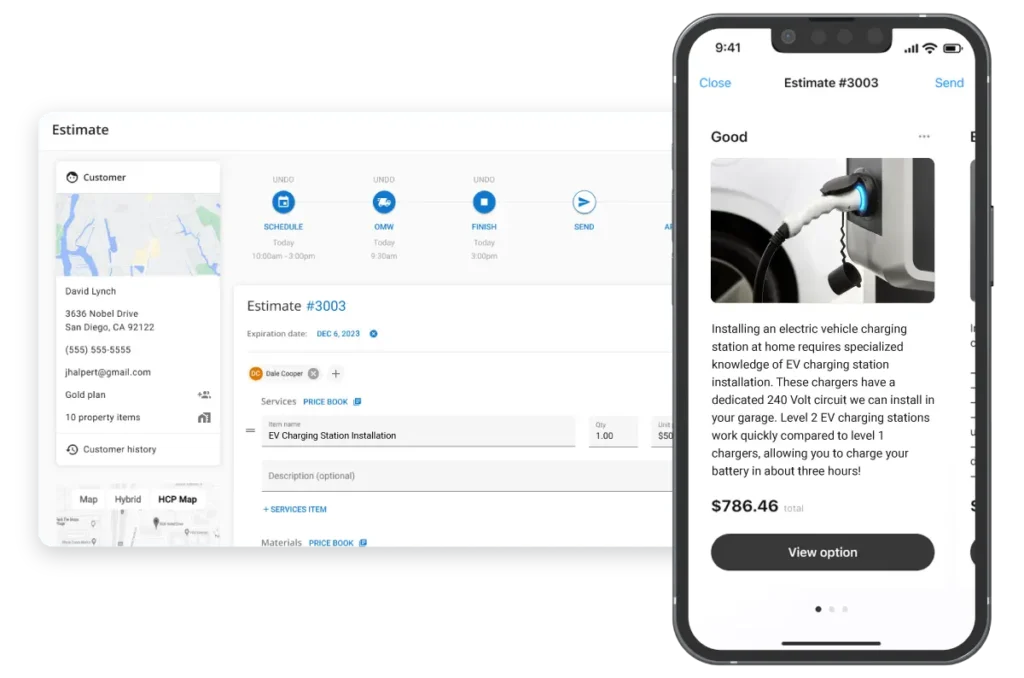
Now that you have calculated the materials, items, and labor, it’s time to create an estimate. This step isn’t the final bid preparation phase, but you should have this calculation before proceeding further.
Add up your totals for materials, items, and labor costs. This calculation creates your estimated job costs, also known as direct costs. Create a subtotal from all three, then calculate overhead and profit for the job.
Step 6: Calculate Overhead for Your Job Estimate
Overhead is the indirect costs required to run the business, excluding labor, job materials, and job items. Based on the estimated job period, you’ll add this to your estimated total later.
Overhead includes but is not limited to the following:
- Utility costs
- Insurance costs
- Third-party services (for the business, not a job), including bookkeeping, janitorial, etc.
- Marketing
- Property lease(s)
- Property taxes
- Software for the business
- Licenses, permits, etc.
- And much more
There are three types of overhead expenses:
Fixed Overhead: Costs that remain the same every month, including property taxes, licenses, rent, salaries, etc.
Variable Overhead: Costs determined based on the level of business activity, including marketing costs, legal expenses, office supplies, fuel, shipping, etc.
Semi-Variable Overhead: Costs based on fixed charges and variable costs, such as utilities, sales commissions, bonuses, audit fees, etc.
Once you calculate your overhead based on the specified time for the job, add that to your estimate alongside materials, items, and labor. The overhead costs will be a percentage amount based on the job duration.
Step 7: Calculate Profit
Profit is the amount you expect to gain from the job after all calculated expenses get paid. These numbers are just a personal decision. You’ll add the desired markup for profit to select categories, including materials, items, and labor costs.
The recommended markup percentage is around 20%, but you can reduce or increase it based on location economy and competitive bids. This profit calculation is for your business, not the client or customer. When you bid on the electrical job, the profit gets factored in.
Step 8: Build Your Electrical Proposal
Now that you have your materials, items, and labor costs, plus overhead and profit, factored into your job estimate, you can build your electrical proposal and calculate your desired bid on the electrical job. But before you submit your bid, it is best to review it two or three times to ensure accuracy.
Step 9: Review and Double Check Your Estimate for Bidding
At this point, you took your job estimate total, incorporated overhead and profit, and built your proposed bid amount. Now, it is important to double-check everything to ensure accuracy. You wouldn’t want a simple mistake to cost you thousands of dollars or lose profit from the job. Once you are confident in your bid amount, it’s time to submit it.
Step 10: Submit Your Bid
Electronic bid submissions are always best if available. This method saves time, gives you a faster bid, and allows the potential client or customer to accept it on the spot. Be ready if the possible client asks questions or wants more details.
What Clients Expect when Receiving Your Electrical Estimate/Bid
- Organized contract documents and data with concise details
- Your previous experience and qualifications
- Fully completed submissions based on their requirements, instructions, and needed documents
- Bids before the deadline. The sooner, the better for you!
What to Do After Submitting Your Bid
After submitting your electrical project bid, you should remain on standby and monitor for responses. If the client asks any questions, you want to respond quickly. Waiting can mean losing the job to another business that reacted quickly. If the potential client accepts your bid, you’ll want to begin the job process quickly.
How to Find Electrical Jobs to Bid On
Finding electrical jobs to bid on when starting your business can be challenging, but there are several strategies you can use to kickstart your job opportunities.
1. Market Yourself and Your Company
The first thing you should do is build your brand and market it. Not surprisingly, companies search for you to get more information. If you’re all over the internet and appear in ads, it makes you look professional and successful.
Social media is another critical component of your marketing strategy. It has power through word-of-mouth business and bidding opportunities from potential clients. You gain an audience, you get traffic, and you get word-of-mouth business.
If you target residential electric services, the Yellow Pages, local newspapers, and other local media are great resources to market your company.
2. Monitor Bid Boards and Construction Websites
You can monitor bidding websites once you have made a name for yourself through marketing efforts. Construction bid websites are a great opportunity because general contractors almost always need electrical services to complete the job.
Top Locations to Bid on Electrical Jobs
- ConstructionConnect: This site is among the most popular construction bidding websites. Choose between Subcontractor, General Contractor, and Manufacturer to receive custom-tailored bidding jobs. Narrow your results down to private jobs, as well as industrial, commercial, and several other job types. It’s an excellent source for subcontracting through general contractors.
- Dodge Construction Network: This site lets subcontractors connect with firms, people, and projects, providing real-time project data and detailed information. You can find projects within your targeted market and place your bids.
- Construction Bid Source: This website lets electrical contractors search and find quality projects, post their businesses on projects to get recognized, and receive email notifications for any bids they place. Narrow down your search criteria to find relevant, semi-local, biddable jobs.
Other potential ways to find electrical jobs to bid on include local and surrounding area newspapers, local magazines or pamphlets, and local/state/federal websites that post information on contracting jobs. You can also join trade associations to gain access to bid opportunities. Joining Associated General Contractors of America (AGC) is also a great way to gain access to bid opportunities.
3. Network and Build Relationships
Creating relationships is always a great way to gain business. Join the local Chamber of Commerce, join clubs in the area, and attend other social gatherings to build relationships that lead to bidding opportunities.
Grab Our Free Customizable Electrical Contractor Templates
Whether you’re a one-man electrician or a commercial electrical contractor, our templates are designed to streamline your entire estimating and bidding process. From electrician estimate templates to electrical proposal templates and electrician contract templates, we’ve got you covered every step of the way.
Our templates are not only easy to use but also customizable to your company’s specific needs. With professional and detailed templates at your fingertips, you’ll impress potential clients and stand out from the competition. Say goodbye to guesswork and hello to winning more jobs.
Grab Our FREE Electrician Estimate Template
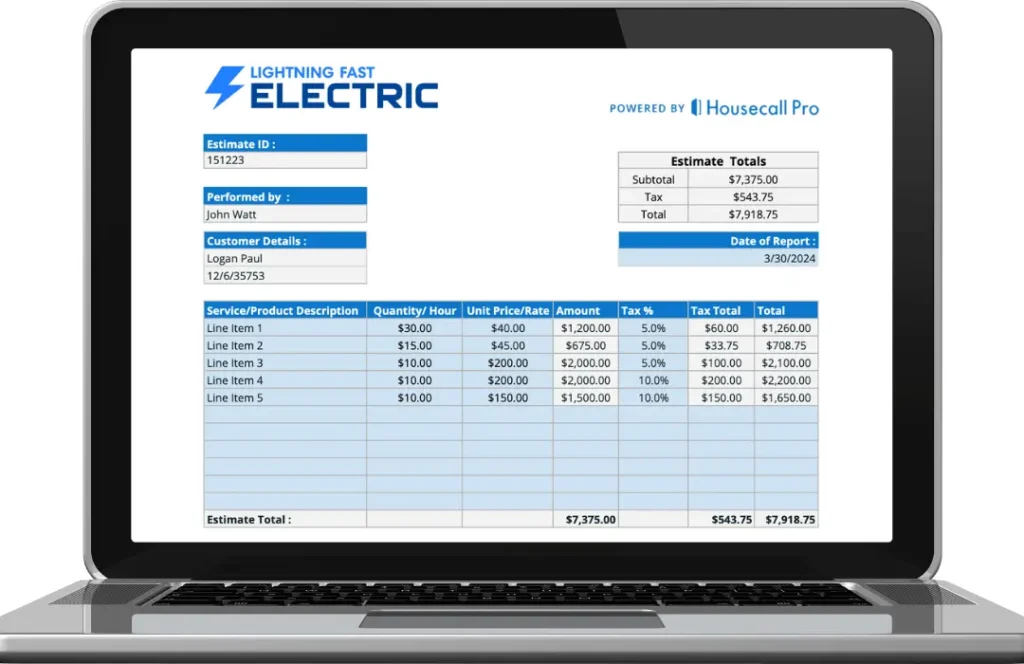
Our template is designed specifically for electrical contractors, taking into account all the necessary factors to accurately calculate your costs. Simply input the details of the job, and let our template do the rest. From labor and materials to overhead and profit margins, our template covers it all, ensuring that you submit competitive and accurate bids every time.
By using our free electrician estimate template, you’ll not only save time but also impress potential clients with professional and detailed estimates.
>>> Download your free electrician estimate template here. <<<
Download our FREE Electrical Proposal Template
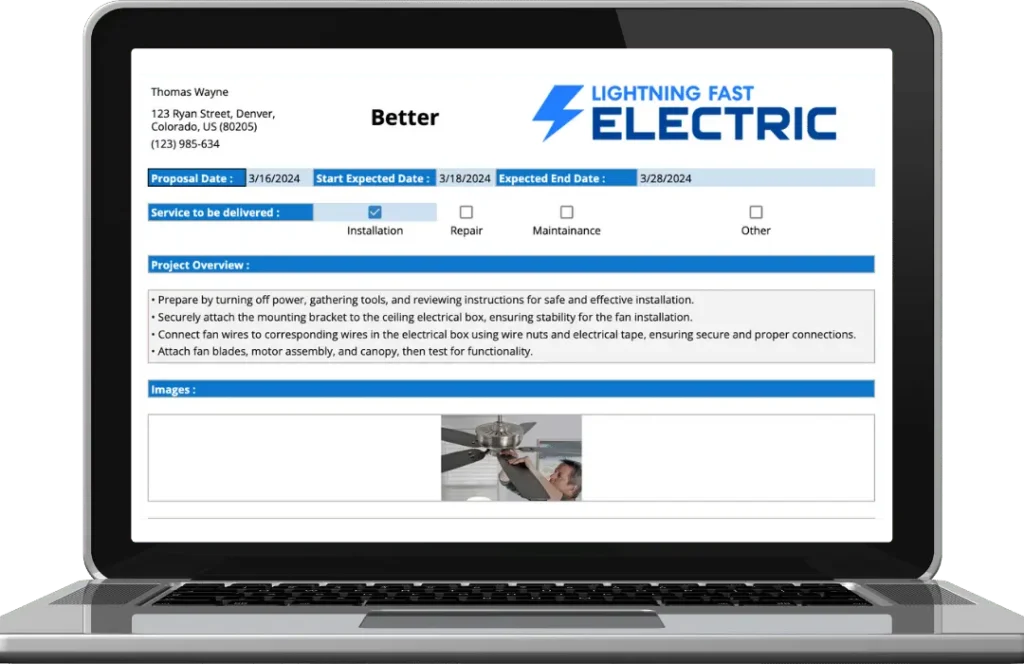
Our professionally designed template makes it easy to create stunning and persuasive proposals that will impress your clients and increase your chances of winning jobs.
With our template, you can showcase your expertise, highlight your services, and outline your pricing in a clear and organized manner. Whether you’re bidding on residential or commercial projects, our template can be customized to meet your specific needs, allowing you to create tailored proposals that resonate with your clients.
>>> Grab your free electrician proposal template here. <<<
Grab Your FREE Electrician Contract Template
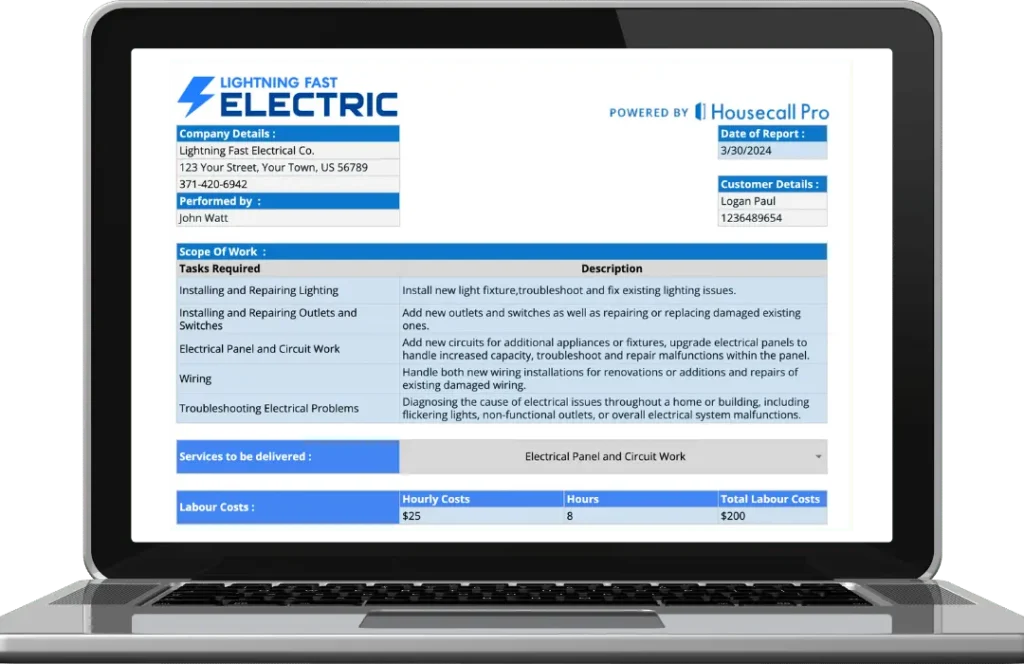
Once you’ve won a bid, it’s essential to have a solid contract in place to protect yourself and your business. With Housecall Pro’s free electrician contract template, you can ensure that all parties are on the same page and avoid any misunderstandings or disputes down the line.
Our template covers all the essential elements of a contract, including scope of work, payment terms, timelines, and more. It’s fully customizable, allowing you to tailor it to the specific needs of each project. Plus, our template is legally vetted, giving you peace of mind knowing that your contracts are watertight and enforceable.
>>> Grab your free electrician contract template here. <<<
Estimate Electrical Jobs With Precision with Housecall Pro
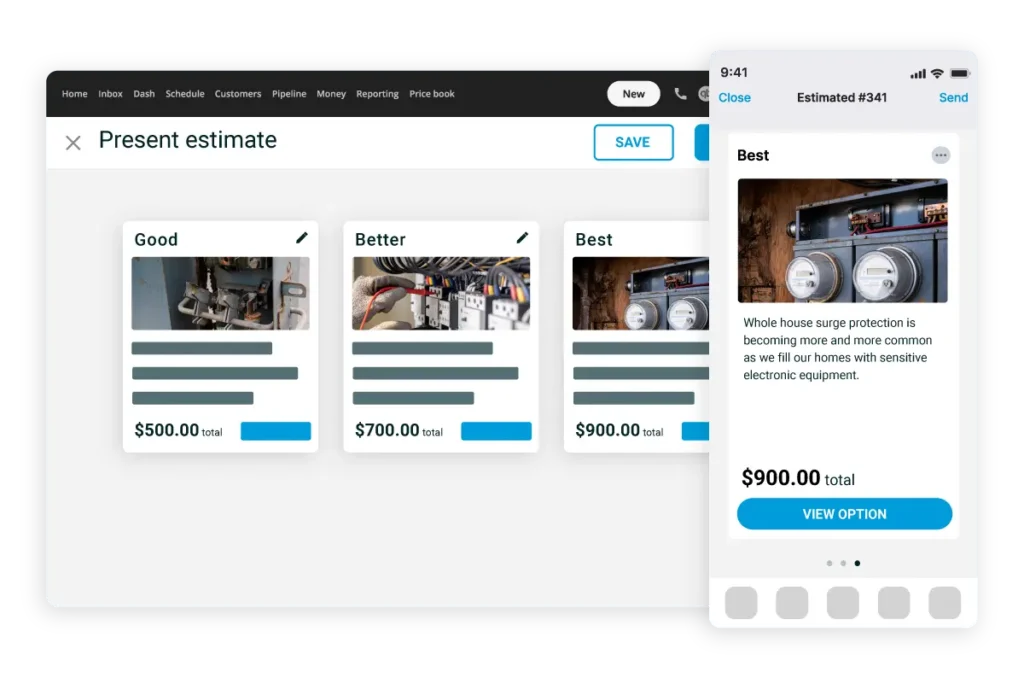
Creating electrical estimates and placing bids on jobs is a very time-consuming, tedious task. The uncertainty of tiny mistakes can cost you in the form of profits, and you risk falling behind schedule. To simplify your efforts and increase time for other essential things in your business, Housecall Pro offers detailed, down-to-dollar estimating software designed to cover every angle in the estimating process, delivering more accurate bids and winning more jobs.
Advantages of Using HouseCall Pro Electrical Estimating Software
Housecall Pro’s estimating software for electrical contractors optimizes the estimate process, delivering precise options for competitive job bidding. It saves considerable time by including all the essential data you need to provide accurate, precise bids. With so much information to consider and implement in your estimate, our electrical estimating software does the legwork for you. You can use it at the office on your PC or while on the go using your smartphone.
With Housecall Pro as your estimating ally, electrical contractors can enjoy a range of benefits, such as:
- Streamlined price lists, labor rates, and other essential data for accurate calculations.
- Professionally branded, customized templates.
- Good, better, and best options to choose from.
- Follow-up reminders on past-due estimates.
- And more!
Don’t risk your hard-earned reputation by entering into verbal agreements. Download our free electrician templates today and protect yourself from potential liabilities.


